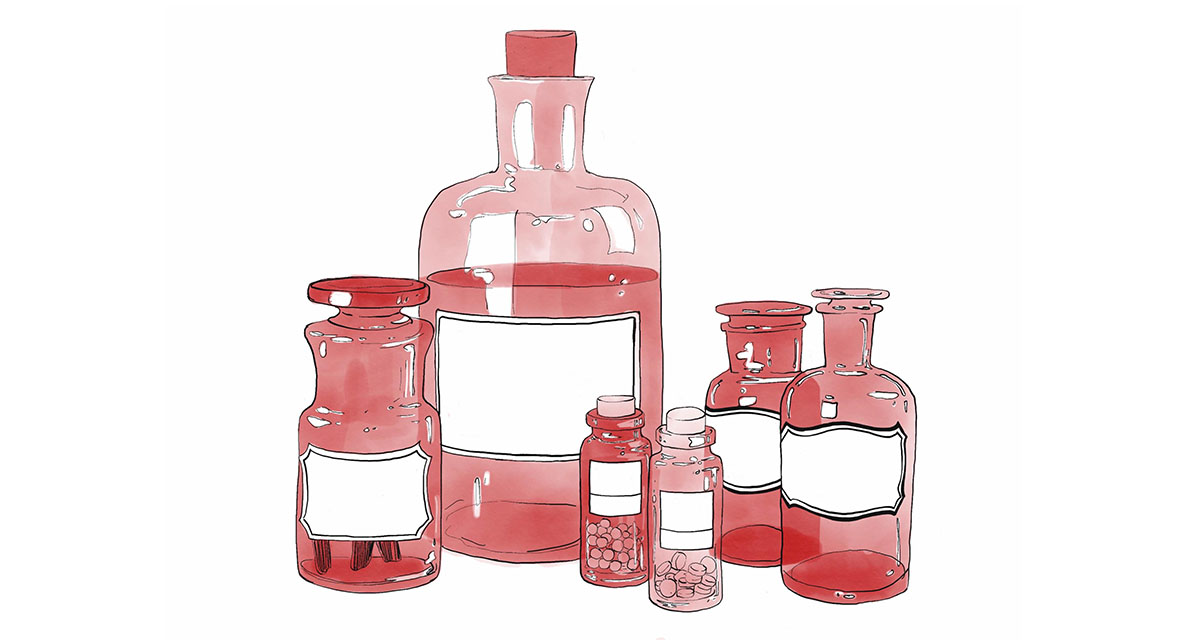Looking Back at the History of Pharmacies
A renewed focus on innovation and patient control could lead to more affordable medications. Prescription medications are the result of modern innovations and extensive research and development — but the practice of treating illnesses with compounds that offer medicinal qualities has been around for thousands of years.

We may still use symbols dating back to Egyptian mythology, but we’ve come a long way with our pharmaceutical practices and treatments in the many centuries since. Yet, there’s still much we can learn from our long history of treating illnesses — insight we can use to create a fairer, less confusing approach to prescribing medicine.
In honor of American Pharmacists Month, we take a look at the past, present and future of prescriptions and the evolving role of pharmacies and pharmacists.
It’s important we look to our past. Here’s why.
Today’s system — one pharmacy and one price — doesn’t work for many patients. Health insurance broker Policygenius has surveyed Americans about this issue for three consecutive years, and they’ve found people are increasingly confused about their healthcare — and what it covers.Health Insurance Literacy Survey 2019: Americans are increasingly confused about health care,” Policygenius, 2019 In fact, more than a quarter of those surveyed in 2019 said they’ve skipped medical treatment because it wasn’t clear what was covered. The bottom line is, of course, is this: Pricing feels like a mystery for many patients, particularly when it comes to consumer choice.
By examining how the healthcare industry got to this place, we might find ideas for improving the system.
The past: a focus on medication
For the first few decades of the 20th century, pharmacists created each medication by hand, based on recipes — the original prescriptions — from doctors.
Prices were set based on ingredients, along with the time and skill needed to create each treatment. And each community pharmacy set their own prices, which varied greatly by state.
Starting in the 1950s, the growth of mass-produced prescription medications allowed doctors to write paper prescriptions. This also allowed patients to submit their prescriptions to a pharmacy of their choice.
Since there was no longer a need to create medications by hand, the role of the pharmacist evolved and expanded into a new kind of healthcare resource.
The present: a focus on the patient
As the evolution and development of new drugs continues, pharmacists today focus more on helping patients navigate this rapidly changing world.
As a result, trust between pharmacists and their patients has grown.Public Perceives Pharmacists as Some of the Most Trusted Professionals,” Pharmacy Times, 2018 Pharmacists consult on drug interactions and side effects and make recommendations for over-the-counter medications.
Yet pharmacy choice is still largely controlled by Pharmacy Benefit Managers (PBMs). Their negotiation of the sale of medicine between pharmacies and drug manufacturers sets the price patients pay at their pharmacy. The decision of which pharmacies are in-network for insurance plans — and which are out-of-network — impact price, too.
Increasingly, patients want to be able to shop around for the best prescription price, much as they would any consumer good. And allowing them to do so benefits the entire network.
Consider the impact of price on prescription abandonment (i.e., the proportion of patients who receive approval from their insurer but do not initiate therapy). Evidence suggests that abandonment scales with out-of-pocket costs. For prescriptions less than $50, abandonment can range from 8% ($0–9.99) to 21% ($40–49.99). As costs escalate beyond $250, prescription abandonment can reach 69%.Patient Affordability Part One, The Implications of Changing Benefit Designs and High Cost-Sharing,” IQIVIA Institute, 2018
And while a $250 claim may seem unlikely, the average claim for patients with high-deductible insurance plans was $270 in 2017.Patient Affordability Part Two, Implications for Patient Behavior and Therapy Consumption," IQIVIA Institute, 2018
The future: a focus on lowering prescription costs
In the immediate future, politicians appear set to address runaway prescription costs.
President Trump has reiterated his pledge to lower prescription drug prices, and the U.S. House of Representatives passed a bill in December 2019 to cap out-of-pocket prescription drug costs for Medicare enrollees.
Outside these government moves, the private sector is also working to help lower prescription costs.
A pharmacy industry trade group identified several trends to watch for this year, including artificial technology developing new drugs and 3D-printing technology making new medications.The Ten Pharmacy Trends to Watch Out For in 2020,” APPA, Dec. 2, 2019
Meanwhile, a 2019 survey of 1,000 healthcare leaders suggests the top trend for the foreseeable future will be patients becoming consumers with their healthcare needs.2019 Annual Healthcare Trends Survey,” Definitive Healthcare, April 22, 2019
In other words, as patients shoulder more of the financial burden for their healthcare, they’re asking for more from their healthcare providers, including pharmacists. This request includes becoming more informed on their healthcare options and assistance finding the lowest cost, best value and the highest level of convenience with their treatments and care.
Empowering patients as consumers of healthcare can help ease the economic pressures burdening many — potentially improving their access to the medication they need to live healthy lives. And prescription price transparency and affordability options for patients at each stage of their journey may help mitigate the economic and social challenges that are exacerbated by high-deductible plans and rising out-of-pocket spending.
The latest healthcare insights, floated right to your inbox.



